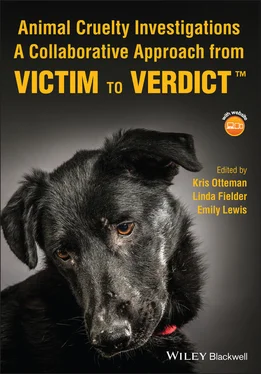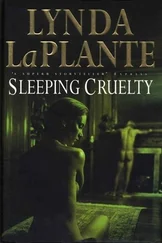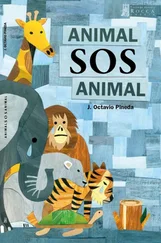Animal Cruelty Investigations
Здесь есть возможность читать онлайн «Animal Cruelty Investigations» — ознакомительный отрывок электронной книги совершенно бесплатно, а после прочтения отрывка купить полную версию. В некоторых случаях можно слушать аудио, скачать через торрент в формате fb2 и присутствует краткое содержание. Жанр: unrecognised, на английском языке. Описание произведения, (предисловие) а так же отзывы посетителей доступны на портале библиотеки ЛибКат.
- Название:Animal Cruelty Investigations
- Автор:
- Жанр:
- Год:неизвестен
- ISBN:нет данных
- Рейтинг книги:3 / 5. Голосов: 1
-
Избранное:Добавить в избранное
- Отзывы:
-
Ваша оценка:
- 60
- 1
- 2
- 3
- 4
- 5
Animal Cruelty Investigations: краткое содержание, описание и аннотация
Предлагаем к чтению аннотацию, описание, краткое содержание или предисловие (зависит от того, что написал сам автор книги «Animal Cruelty Investigations»). Если вы не нашли необходимую информацию о книге — напишите в комментариях, мы постараемся отыскать её.
Animal Cruelty Investigations — читать онлайн ознакомительный отрывок
Ниже представлен текст книги, разбитый по страницам. Система сохранения места последней прочитанной страницы, позволяет с удобством читать онлайн бесплатно книгу «Animal Cruelty Investigations», без необходимости каждый раз заново искать на чём Вы остановились. Поставьте закладку, и сможете в любой момент перейти на страницу, на которой закончили чтение.
Интервал:
Закладка:
2 2 Oklahoma – “[A]ny mammal, bird, fish, reptile or invertebrate, including wild and domesticated species, other than a human being.” Oklahoma Statutes Annotated, title 21, Pt VII, chapter 67, s 1680.1 1991 (OK).
3 3 Delaware – “‘Animal’ does not include fish, crustacea, or molluska.” Delaware Code Annotated, title 11, Pt I, chapter 5, subchapter VII, subpart A, s 1325(a) (11) 1972 (DE).
4 4 Georgia – “‘Animal’ shall not include any fish nor shall such term include any pest that might be exterminated or removed from a business, residence, or other structure.” Code of Georgia Annotated, title 16, chapter 12, article 1, s 16‐12‐4(a) (1) 2014 (GA).
5 5 Kansas – “[E]very living vertebrate except a human being.” Kansas Statutes Annotated, chapter 21, article 64, s 717B.1(1) 2011 (KS).
6 6 Iowa – “Nonhuman vertebrates, but not including: Livestock; Game, fur‐bearing animals, fish, reptiles, and amphibians, unless owned, confined or controlled by a person; Nuisance non‐game species.” Iowa Code Annotated, title XVI, subtitle 1, chapter 717B, s 1 1994 (IA).
7 7 Nebraska – “Any vertebrate member of the animal kingdom [except an] uncaptured wild creature or a livestock animal.” Revised Statutes of Nebraska Annotated, chapter 28, article 10, s 2 1990 (NE).
8 8 Garner, B.A. (ed.) (2019). Black's Law Dictionary Standard, 11e, 697–698. St. Paul, MN: Thomson Reuters.
9 9 Miranda vs. Arizona, 86 St. Ct. 1602, (1966).
10 10 Garner, B.A. (2019). Black's Law Dictionary Standard, 11e, 163. St. Paul, MN: Thomson Reuters.
11 11 Garner, B.A. (2019). Black's Law Dictionary Standard, 11e, 231. St. Paul, MN: Thomson Reuters.
12 12 Nevada Revised Statutes Annotated, title 50, chapter 574, Cruelty to Animals, s 574.100(1) (a) 2017 (NV).
13 13 Idaho Code Annotated, title 25, chapter 35, ss 25‐3504A; 25‐3520A(3) (b) 2016 (ID).
14 14 Garner, B.A. (2019). Black's Law Dictionary Standard, 11e, 1920. St. Paul, MN: Thomson Reuters.
15 15 Garner, B.A. (2019). Black's Law Dictionary Standard, 11e, 1107. St. Paul, MN: Thomson Reuters.
16 16 Uniform Laws Annotated, Model Penal Code, P I, article 2, s 2.02 2020 (USA).
17 17 Garner, B.A. (2019). Black's Law Dictionary Standard, 11e, 1394. St. Paul, MN: Thomson Reuters.
18 18 Garner, B.A. (2019). Black's Law Dictionary Standard, 11e, 1438. St. Paul, MN: Thomson Reuters.
19 19 Garner, B.A. (2019). Black's Law Dictionary Standard, 11e, 1712. St. Paul, MN: Thomson Reuters.
20 20 Garner, B.A. (2019). Black's Law Dictionary Standard, 11e, 1812. St. Paul, MN: Thomson Reuters.
Notes
1 1As of January 2021, veterinarians are mandatory reporters of animal cruelty in 19 states. Animal Legal Defense Fund (2020). Laws in favor of veterinary reporting of animal cruelty. https://aldf.org/project/veterinary‐reporting (accessed 4 August 2021).
2 2As of January 2021, 17 states have mandatory possession bans for convicted animal cruelty offenders. Animal Legal Defense Fund (2020). Laws supporting post‐conviction possession bans. Animal Legal Defense Fund. https://aldf.org/project/post‐conviction‐possession‐ban (accessed 4 August 2021).
2 Animal Basics
Kris Otteman, Zarah Hedge, and Linda Fielder
While laws require that animals must receive basic minimum care, the legal definition of what constitutes basic care varies by species. The husbandry needs of a horse look wildly different from those of a guinea pig. In providing accurate and thorough investigations of animal cruelty cases, it is important for each of the experts involved to have the appropriate level of baseline or deep expertise pertaining to the specific species they will be involved with. This knowledge of animal basics provides guidance and analysis when answering the most common questions facing investigators, law enforcement, prosecutors, animal control officers, and veterinarians responding to concerns regarding abuse or neglect of an animal. When approaching these cases, it is important to ask: “Is the appearance of the animal within normal limits? Is the diet appropriate for the age, condition, and species involved? Is the care provided meeting the basic husbandry needs of the animals and the standards set forth in the county or state code, rules, or laws?” A foundation in animal basics will guard against failures in addressing animal cruelty. This chapter will offer an introduction to animal husbandry, which is the management and care of animals and includes the areas of nutrition, sanitation, housing, and environmental requirements for some common species. We will also introduce the Five Freedoms and examine how they helped shape animal protection laws and establish the field of animal cruelty investigations.
Veterinarians possess expert knowledge about the basic needs of animals and are trained and qualified to diagnose and treat animal diseases and illnesses. Law enforcement and investigators will benefit from trainings and resources that provide basic animal knowledge to increase the effectiveness of their work and are encouraged to enlist the aid of a veterinarian who is comfortable with the species in question when working animal cruelty cases and assessing animal welfare deficiencies.
States define the word “animal” differently. In your state, companion animals may have statutory requirements from which livestock are exempt. The same is true for other species such as birds, insects, and aquatics. Know how your state defines animals and what statutes apply to them [1].
2.1 The History of the Five Freedoms and Their Impact on Animal Welfare Laws
The Five Freedoms were developed in the 1960s to establish standards of minimum care for animals, particularly those raised for food, and have since been accepted in the United States and across the world [2]. They are the basis from which laws concerning the care and treatment of captive animals developed. An understanding of the Five Freedoms acts as a foundation for animal cruelty investigations, when determining if an animal's basic needs are being adequately met. The Five Freedoms are uniformly applicable to animals in livestock and farming operations, breeding and shelter facilities, and any environment where an animal is confined or enclosed in any manner, including animals kept as pets. They are as follows [3]:
Freedom from Hunger and Thirst: by ready access to fresh water and a diet to maintain health and vigor.
Freedom from Discomfort: by providing an appropriate environment including shelter and a comfortable resting area.
Freedom from Pain, Injury, or Disease: by prevention or rapid diagnosis and treatment.
Freedom to Express Normal Behavior: by providing sufficient space, proper facilities, and company of the animal's own kind.
Freedom from Fear and Distress: by ensuring conditions and treatment which avoid mental suffering.
The Five Freedoms, along with the Animal Welfare Act [4], a federal law that sets minimum standards of care for animals in breeding and laboratory environments, serve to memorialize the fact that a failure to provide for an animal's basic needs is both inhumane and unlawful, and that animals deprived of these provisions suffer pain and mental anguish.
2.2 Veterinarians as Experts in the Field
When working on any case, but especially those with less common species, involving an experienced veterinarian or other expert can be essential to the proper understanding and workup of the case. For example, when investigating neglect within a large avian breeding facility, a zoo veterinarian may be able to accompany investigators on scene and help with assessment of the environment and basic animal needs. Such an expert may also provide expertise in identifying and gathering evidence and the humane removal and housing of multiple species, if necessary. Veterinarians and other animal experts may also play a vital role in planning the logistics and resource needs of complex cases or those involving multiple animals or a variety of species. While a veterinarian is not needed in all cases, most situations will benefit significantly from a doctor's involvement.
Читать дальшеИнтервал:
Закладка:
Похожие книги на «Animal Cruelty Investigations»
Представляем Вашему вниманию похожие книги на «Animal Cruelty Investigations» списком для выбора. Мы отобрали схожую по названию и смыслу литературу в надежде предоставить читателям больше вариантов отыскать новые, интересные, ещё непрочитанные произведения.
Обсуждение, отзывы о книге «Animal Cruelty Investigations» и просто собственные мнения читателей. Оставьте ваши комментарии, напишите, что Вы думаете о произведении, его смысле или главных героях. Укажите что конкретно понравилось, а что нет, и почему Вы так считаете.












